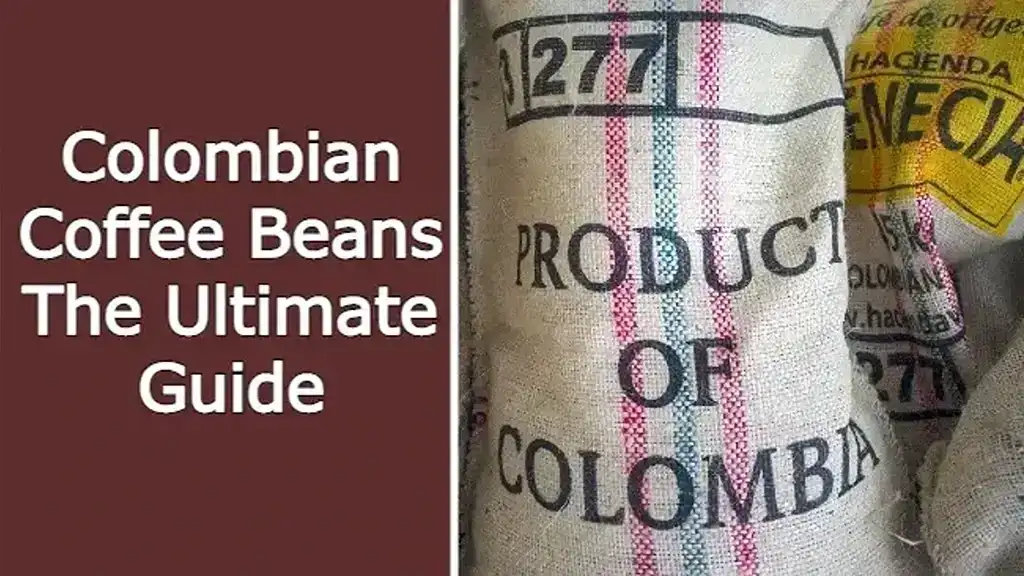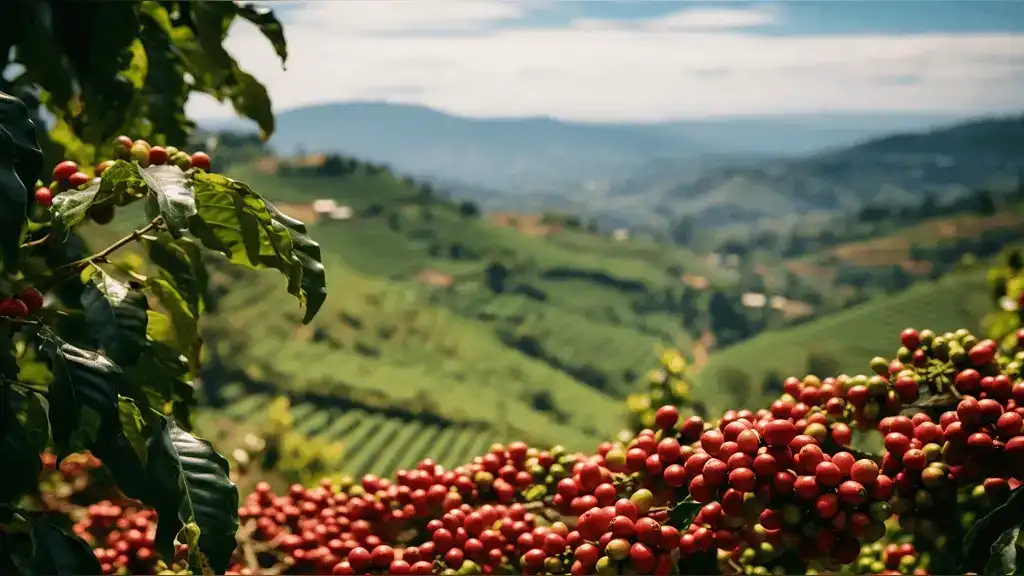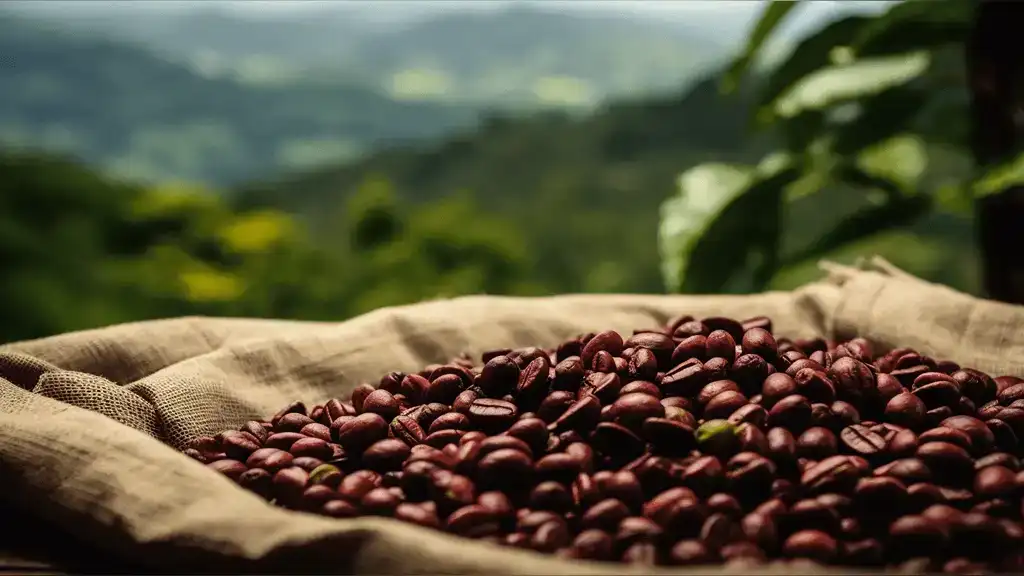Ethiopian Sidamo coffee is one of the most popular coffees in the world, renowned for its rich flavor and unique aroma. This coffee is made from Arabica beans, which are grown in Ethiopia’s Sidamo region, a high-altitude area that provides ideal growing conditions.
Starbucks even has its own brand of single origin sun-dried Ethiopian Sidamo coffee that delivers a unique taste experience. Let’s take a look at why this coffee is so popular.
What Is Sidamo Coffee?
Sidamo Coffee is a type of Ethiopian coffee grown in the south-central region of the country. It has a unique flavor that many consider one of the best in the world, with notes of blackberry, honey, and citrus. It’s also known for its low acidity and full body.
Ethiopian Sidamo coffees are specialty coffees grown in the southern region of Ethiopia, known as Sidamo. These single-origin coffees are 100% Arabica beans, grown at elevations between 4500 to 6500 feet above sea level. The climate in this region is ideal for growing high-quality coffee beans due to its abundant rainfall and warm temperatures throughout the year.
Origins of Coffee in Ethiopia
Coffee was first discovered and cultivated on Ethiopian soil more than 1,000 years ago. It quickly spread throughout the country and became integral to Ethiopian culture. The beans were used for religious ceremonies and served as a form of hospitality. Even today, Ethiopians still enjoy coffee as part of their daily lives.
Curious about the origins of your favorite Sidamo coffee? Discover the Birthplace of Coffee Guide and immerse yourself in the rich Ethiopian coffee heritage.
Ethiopia, being the birthplace of coffee, has various regions that produce distinct coffee profiles. While Sidamo is undoubtedly a gem, another region that has garnered attention for its unique beans is Yirgacheffe.
Dive deep into the understanding of Ethiopian Yirgacheffe beans and discover what sets it apart in the world of coffee.
While Sidamo has its distinct flavors, don’t miss out on the harrar coffee ethiopian insights. Dive into the Ethiopian Harrar coffee guide and immerse yourself in another rich facet of Ethiopian coffee heritage.
Exploring the Unique Terroir of Sidamo Coffee
For centuries, this region in Ethiopia has been renowned for producing some of the world’s finest coffees. The combination of ideal growing conditions and thoughtful processing techniques makes Sidamo one of the best coffees in the world.
It’s no wonder why people come from all over to experience its unique flavor profiles! Whether you’re a fan of traditional washed or natural processed coffees – there’s something special about each one that comes out from this region!
With its rich history full of innovation and craftsmanship, it’s no wonder why many regard Sidamo as one of Ethiopia’s premier origin regions for quality specialty coffee production!
Ethiopian Sidamo coffee’s rich flavors and aromas are a testament to the region’s unique terroir. But have you ventured beyond Sidamo? Experience the zimbabwean coffee profiles and uncover another African coffee treasure.
Ethiopian Sidamo Coffee Variety
Arabica beans are the main type used for Ethiopian Sidamo coffee, as they tend to produce a richer flavor than other varieties. Arabica beans are grown mainly in Ethiopia and Latin America, but some regions also grow Robusta beans or a combination of both varieties.
However, because Robusta beans produce less flavorful coffee, they are not typically used for the production of Ethiopia’s famous Sidamo blend.
Starbucks’ Single Origin Sun-Dried Ethiopian Sidamo
Starbucks takes great pride in its selection of coffees and works hard to ensure that all its products meet a high quality standard. Its single origin sun-dried Ethiopian Sidamo coffee is no exception and has been praised by customers for its smooth taste and subtle notes of chocolate and blueberry.
It utilizes a unique roasting process that ensures each batch tastes just as good as the last. This process combined with the freshness guaranteed by sourcing directly from Ethiopian farmers leads to an incredibly rich cup of coffee every time.
The customer reviews for Starbucks’ single origin sun-dried Ethiopian Sidamo have overwhelmingly been positive, with many customers proclaiming it to be one of the best coffees they have ever tasted.
Customers have commented on the smoothness and balance between sweet and acidic tones produced by this blend, as well as how easily it can be brewed using any method (including pour over). There are even some people who claim that they can actually smell blueberry while drinking this particular variety!
The Perfect Cup of Sidamo Coffee
Sidamo Coffee is one of Ethiopia’s greatest exports and a fantastic option for any serious coffee lover. If you take care to roast and prepare it correctly, you can really bring out all its amazing flavors and aromas while avoiding bitter or burnt tastes.
What makes Sidamo so special? Why should you roast your beans to a medium level? And how can you get the most out of your cup? Read on to learn everything about this amazing coffee.
Mesmerized by the unique flavors of Ethiopian Sidamo? Expand your coffee journey with our Tanzanian Coffee Flavor Profile Guide. Experience the diverse and rich notes of Tanzanian brews.
Roasting Sidamo Coffee Beans
In order to get the most out of your cup of Sidamo, it’s important to roast your beans at just the right temperature and duration. A medium level roast will bring out all the flavors without burning them away.
To achieve this perfect medium level roast, your beans should be roasted at between 375°F-425°F (190°C-218°C). Roast times vary depending on bean size but generally range from 10-15 minutes.
Enjoying Sidamo Coffee
Once roasted, you can enjoy your Sidamo coffee any way you like—hot or cold! For hot drinks, make sure not to over-extract or under-extract your ground. A 1:16 ratio is perfect for bringing out all those nuances in flavor.
If you prefer an icy drink instead, cold brew or pour over are great options that still allow all those delicious flavors to shine through!
Ethiopian Sidamo Coffee Processing Method
Wet-processing plays an important role in producing specialty grade Ethiopian Sidamo coffee beans that have become sought after around the world for their unique flavor profile and complexity. Let’s take a closer look at how this unique process works, and why it has such an impact on the flavor of Ethiopian Sidamo coffee beans.
1. wet-processing
The processing method used for Ethiopian Sidamo coffee beans is known as ‘wet-processing’. This technique involves soaking and fermenting the freshly harvested cherry fruits before removing their skin and pulp (known as ‘mucilage’).
The beans are then washed with high amounts of water pressure to force them through a screen, before drying them either in direct sunlight or mechanical dryers depending on the climate and resources available. Then, they are graded and sorted according to size and weight before being packaged up for sale.
Benefits of Wet-Processing for Ethiopian Sidamo Coffee Beans
Wet-processing produces a clean tasting cup with fruity flavors that retain much of their natural sweetness due to minimal contact with oxygen during fermentation. It also allows more control over sorting by size and weight, which helps ensure only premium quality beans make it into the final product.
Furthermore, by removing the mucilage from around the seeds prior to roasting, wet-processing ensures that each bean absorbs heat evenly during roasting which leads to a more consistent roast color across all batches.
2. Drying Process
The drying process for Ethiopian Sidamo coffee takes place outdoors on terraces or patios that have been constructed specifically for this purpose. Here the beans are spread out on mats or jute bags so that air can circulate around them freely as they dry for 12-17 days depending on weather conditions like humidity levels or wind speed.
In order to ensure consistent results throughout the entire process of drying Ethiopian Sidamo coffee beans, workers must use methods such as turning the beans frequently and covering them if it rains to prevent them from getting wet again.
It is also important to make sure that any remaining moisture content in the bean does not exceed 10%, as too much can cause mold growth or other issues with flavor or texture when roasting. Once all moisture has evaporated from the bean it will be ready for shipment and roasting!
Harvesting Ethiopian Sidamo Coffee
The harvest for Ethiopian Sidamo coffee takes place during a two-month period that begins in October and ends in January each year. During this time, workers handpick each cherry from the tree, removing only those that are ripe enough to be used. After they are picked, they are sorted into three categories: fully ripe, semi-ripe, and overripe, and then processed further.
Once they have been sorted, the beans go through a meticulous process of cleaning, sorting by size and shape, and grading. After this has been done, the beans are stored in large sacks until it is time to dry them.
The ideal growing conditions
The Sidamo region consists of several distinct microclimates that are ideal for growing high-quality coffee beans. The altitude ranges from 1,500 to 2,200 feet above sea level—higher altitudes provide cooler temperatures that are necessary for producing great-tasting coffees with bright acidity and complex nuances.
The soils also vary between regions; clay-rich soils tend to produce sweeter coffees while sandy loam soils create brighter notes with a distinctive floral aroma.
These natural conditions are further enhanced by specialty grading systems that help ensure only high-quality beans make it through processing and into your cup! Coffees from this region must meet strict criteria before they can be certified as “Sidamo” or “Sidama” grade coffees.
This includes factors like altitude, soil type, bean size & density, flavor profile (aroma & taste), color & clarity (of the roasted bean), length of the growing cycle (ripening time), and more!
In addition to its exquisite flavor profile, Ethiopian Sidamo coffee is also known for its hardiness; it can endure hotter climates than other varieties without sacrificing its taste or quality. It is also one of the most sustainable coffees available.
It grows under shade trees which protect water sources while providing income to smallholder farmers who tend them carefully by hand. Because there are no chemical fertilizers or pesticides used during production, this environmentally friendly form of agriculture and farming practices help preserve biodiversity while producing some of the world’s best coffees.
How The altitude affects The Sidamo Coffee Quality
Coffee grown in Ethiopia’s Sidamo region, at altitudes ranging from 1,500 to 2,200 meters above sea level, is renowned for its exceptional flavor and rich aromas. These high-elevation coffee regions offer a unique combination of warm daytime temperatures and cool overnight temperatures that create an ideal growing environment.
This enables the beans to grow slowly and absorb more nutrients as they mature. As a result, they develop more complex flavors with a robust profile that captures the essence of their local climate and soil conditions.
The altitude also affects the acidity levels, resulting in coffee that is full-bodied yet milder in comparison with other regions. The slow growth process allows for the beans to be nurtured and cared for as they develop, creating a cup of coffee with remarkable complexity and depth.















